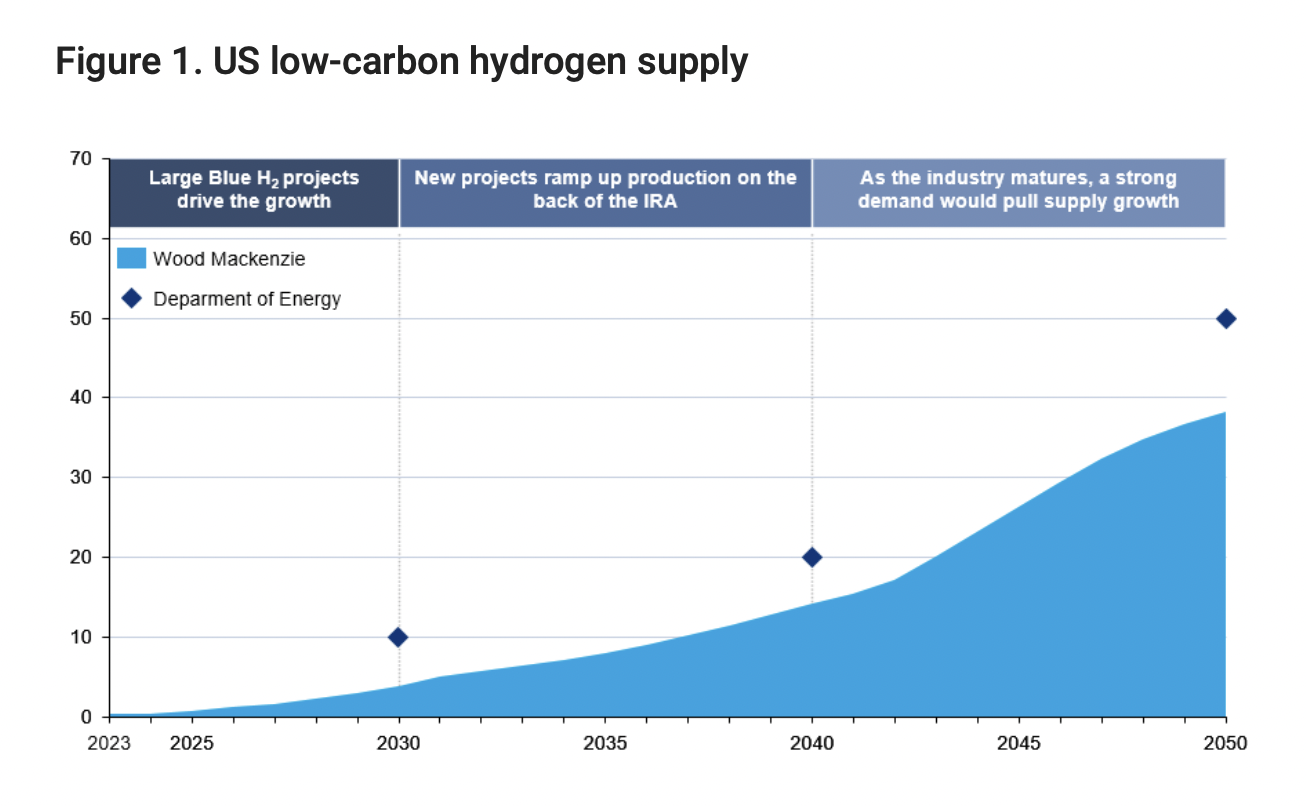Since releasing the U.S. National Clean Hydrogen Strategy and Roadmap on June 6, Wood Mackenzie principal analyst Hector Arreola suggest that the Biden-Harris administration should address cost and scaling roadblocks if they hope to meet the framework’s ambitious goals.
The roadmap aims to accelerate the deployment of clean hydrogen by laying the foundation for a strong and productive partnership between the public and private sectors, said U.S. Secretary of Energy Jennifer M. Granholm. “It will guide government and industry to realize the full potential of this incredibly versatile energy resource.”
Clean Energy Associates (CEA) estimates that almost 100 million tons of fossil-fueled hydrogen are used in the refining, fertilizer and chemical industries each year. Clean-hydrogen, made from electrolyzing water with solar or wind energy, can help lessen emissions from industrial sectors like heavy-duty transportation and chemical production. It also reduces air pollution by supporting the expansion of renewable energy to power cars and trucks.
The United States hopes to scale domestic clean hydrogen production to 10 million metric tonnes (MMT) annually by 2030, 20 MMT annually by 2040, and 50 MMT annually by 2050, significantly minimizing dependence on fossil-fueled hydrogen. However, Arreola asserts that a slower decline in capital expenditures for electrolytic hydrogen related to renewable power costs and electrolysis load factor scaling might make meeting such production targets difficult.

“The market has yet to move at the necessary pace to fully capitalize on the production potential outlined in the Strategy,” Arreola said.
Fossil-fueled hydrogen costs between $1/kg and $2/kg, almost half the current clean hydrogen production costs: $3/kg to $6/kg. While the Biden-Harris Administration has provided significant investments to advance clean hydrogen technologies, George Touloupas, senior director at CEA suggests the global industry as a whole will need continued financing through innovation and subsidies to meetgoal of scaling enough to compete with and replace fossil-fueled hydrogen.
Increasing the number of cost-effective electrolyzers used to produce green hydrogen is also essential. And their dependence on solar and wind energy is an excellent opportunity for key stakeholders to collaborate on planning and building infrastructure to sustain electric cars, homes and buildings.
Fusion Fuel, a Portuguese modular solar-to-hydrogen facility provider, and Electus Energy, a hydrogen fleet-fueling and power infrastructure developer, announced they would be constructing a 75 MW green hydrogen facility in Bakersfield, California. The project would function as a solar-to-hydrogen site, producing up to 9,300 tons of hydrogen fuel per year to power heavy-duty trucks.
And with 191 days of sunshine each year and only 138 miles from the ocean, Bakersfield presents a competitive advantage with regard to locations suitable for green hydrogen and solar energy production.
But while proximity is one way to ensure renewable energy is readily available at a lower cost, land-locked regions with less sunshine must receive subsidies and policy support until technology and scaling costs decline, Touloupas said. So the DOE should continue to work with key stakeholders as they advance funding to strategize and scale clean hydrogen domestically.
This content is protected by copyright and may not be reused. If you want to cooperate with us and would like to reuse some of our content, please contact: editors@pv-magazine.com.








By submitting this form you agree to pv magazine using your data for the purposes of publishing your comment.
Your personal data will only be disclosed or otherwise transmitted to third parties for the purposes of spam filtering or if this is necessary for technical maintenance of the website. Any other transfer to third parties will not take place unless this is justified on the basis of applicable data protection regulations or if pv magazine is legally obliged to do so.
You may revoke this consent at any time with effect for the future, in which case your personal data will be deleted immediately. Otherwise, your data will be deleted if pv magazine has processed your request or the purpose of data storage is fulfilled.
Further information on data privacy can be found in our Data Protection Policy.